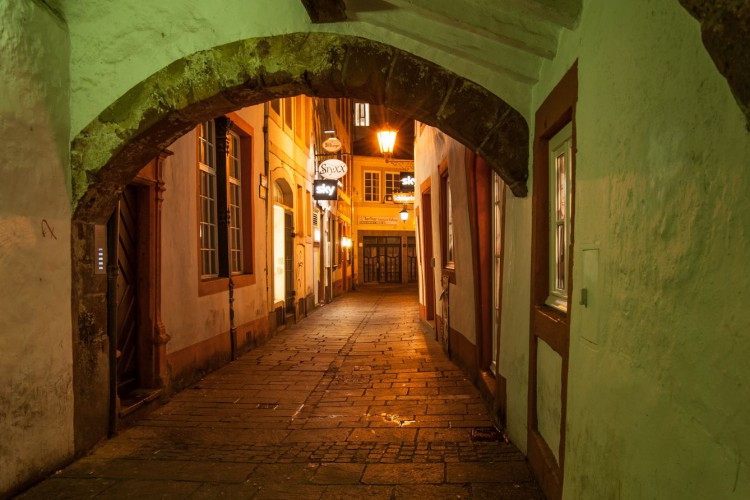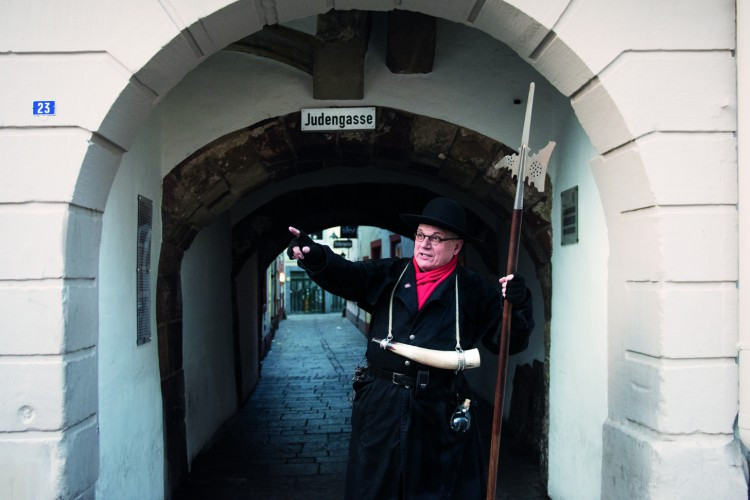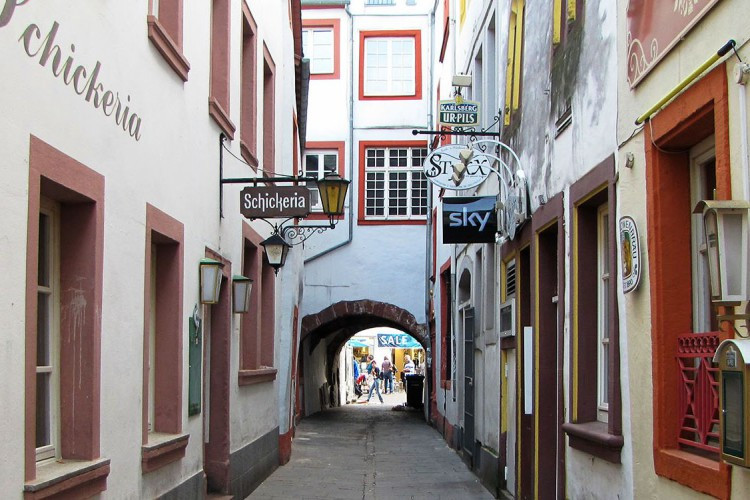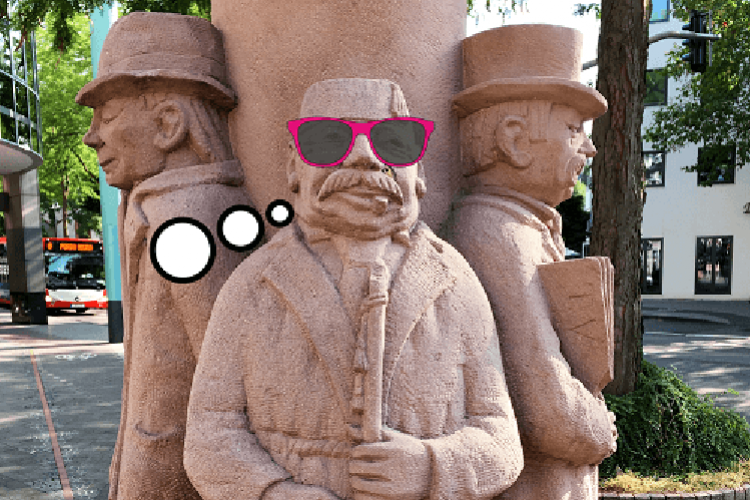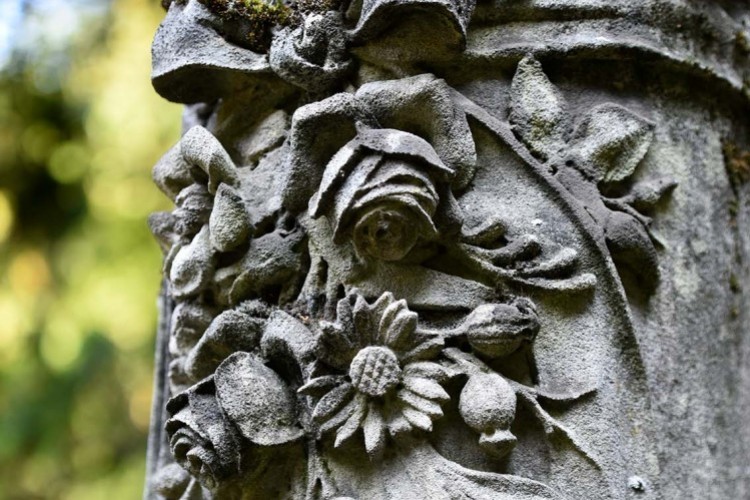Read more
The ‘Little Jewish Gate’ leading onto Simeonstrasse was one of three such gates providing access to the Jewish quarter. It was built around 1219. The house at Judengasse 2 was constructed less than 20 years later, making it the oldest preserved Jewish home in Germany. Back then, the Jewish community was continuing to grow, and within 100 years, there were around 300 Jews living here under the liberal Archbishop Baldwin of Luxembourg, expanding their quarter westwards. There was a men’s and a women’s synagogue, a parish hall, and an inn for foreign Jews. This peaceful coexistence came to an abrupt end in 1349 when, as in many other German cities, the Jews were accused to poisoning the fountains to infect their Christian neighbours with the plague. Numerous Jews died during this pogrom, and the survivors were eventually banished from the city in 1418. It was not until almost 200 years later that Jewish families started resettling in Trier, albeit this time scattered right across the city.
A must for: Laneway-lovers. Gate-crossers. Pub-goers and house explorers.
Middle Ages: 70%
Jewish history: 70%
Drinking fun: 30% (by day), 70% (by night)
PSSSST! THE INSIDER TIP:
Zuckerbergstrasse is today home to a memorial stele dedicated to the synagogue ransacked on Kristallnacht 1938, and which had only been erected by the Jewish community 80 years prior. It was so severely damaged by air raids in 1944 that it had to be demolished in 1956. Just two Torah scrolls survived the war. A piece of the rubble served as the foundation stone for the new synagogue in 1956, and the building was inaugurated on 18 August 1957. It was the second synagogue to be rebuilt post-war after its counterpart in Koblenz. The expressive, geometrically structured building is located on Kaiserstrasse, approx. 5 minutes from the Viehmarkt. Groups who pre-register may visit it together with the Jewish cemetery.
A must for: Laneway-lovers. Gate-crossers. Pub-goers and house explorers.
Middle Ages: 70%
Jewish history: 70%
Drinking fun: 30% (by day), 70% (by night)
PSSSST! THE INSIDER TIP:
Zuckerbergstrasse is today home to a memorial stele dedicated to the synagogue ransacked on Kristallnacht 1938, and which had only been erected by the Jewish community 80 years prior. It was so severely damaged by air raids in 1944 that it had to be demolished in 1956. Just two Torah scrolls survived the war. A piece of the rubble served as the foundation stone for the new synagogue in 1956, and the building was inaugurated on 18 August 1957. It was the second synagogue to be rebuilt post-war after its counterpart in Koblenz. The expressive, geometrically structured building is located on Kaiserstrasse, approx. 5 minutes from the Viehmarkt. Groups who pre-register may visit it together with the Jewish cemetery.

